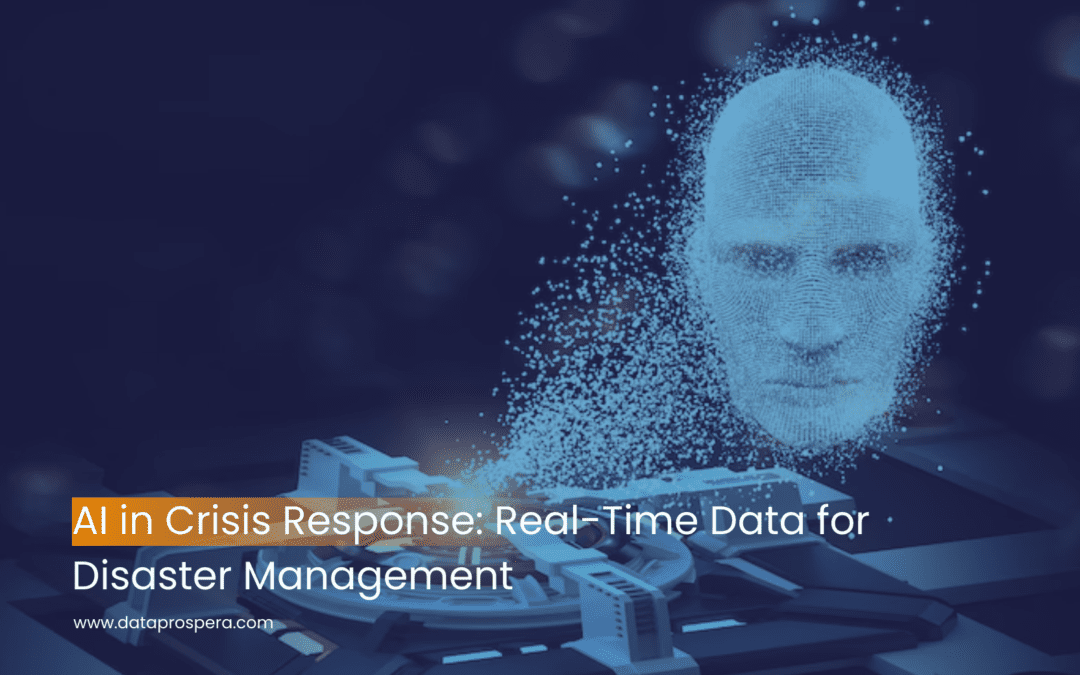When disaster strikes, every second counts. Whether it’s a natural disaster, a health emergency, or a humanitarian crisis, the speed and accuracy of the response can mean the difference between life and death. Today, Artificial Intelligence (AI) and real-time data are revolutionizing the field of disaster management, making responses faster, smarter, and more coordinated than ever before.
The Growing Need for Smarter Disaster Management
Climate change, urbanization, and global interconnectedness have increased both the frequency and complexity of disasters. Traditional crisis response methods often struggle to keep up with the sheer volume of information and the need for rapid decision-making. This is where AI steps in, offering tools that can process massive datasets, predict outcomes, and assist human responders in real time.
How AI Enhances Crisis Response
1. Real-Time Risk Assessment and Prediction
AI models can analyze weather data, seismic activity, and social media feeds to predict natural disasters such as hurricanes, floods, and earthquakes. Machine learning algorithms recognize patterns that humans might miss, enabling earlier warnings and better preparation.
- Anticipates disaster impact zones
- Optimizes evacuation plans
- Reduces casualties through proactive measures
2. Rapid Damage Assessment
After a disaster, AI-powered image recognition systems process satellite images, drone footage, and field reports to assess damage quickly. This accelerates resource allocation and speeds up insurance claims processing.
- Identifies critical infrastructure damage
- Prioritizes rescue and relief efforts
- Facilitates quicker rebuilding
3. Resource Optimization and Logistics
AI helps disaster management teams decide where to deploy supplies, rescue workers, and medical aid. Algorithms suggest the most efficient distribution routes and predict areas likely to experience secondary disasters, such as aftershocks or disease outbreaks.
- Streamlines supply chain logistics
- Maximizes use of limited resources
- Reduces response times
4. Public Communication and Misinformation Control
AI-driven chatbots and natural language processing systems can disseminate accurate, real-time information to the public during a crisis. They can also detect and counter misinformation that could hamper rescue efforts.
- Provides 24/7 crisis hotlines
- Shares safety instructions automatically
- Monitors social media for false news
Real-World Examples
- The UN’s Global Pulse Initiative uses AI to monitor humanitarian crises by analyzing real-time social media data and mobile network information.
- Google’s AI Flood Forecasting System helps predict floods in India and Bangladesh, giving residents earlier warnings.
- NASA’s Disaster Program applies AI and satellite imagery to provide rapid damage assessments after hurricanes, wildfires, and earthquakes.
Learn more about the intersection of AI and public services by visiting our blog on AI for Public Sector Innovation: Smarter Governance.
Challenges and Ethical Considerations
Despite its advantages, AI in crisis response comes with challenges:
- Data Privacy: Gathering and analyzing personal data during crises must be handled with care.
- Bias in Algorithms: Poorly trained AI models can lead to unequal aid distribution.
- Infrastructure Dependence: AI systems require stable internet and power, which may be compromised during disasters.
Ensuring ethical, transparent, and resilient AI deployments is crucial to maximizing benefits while minimizing harm.
The Future: AI as a Standard in Disaster Management
As AI technology matures, it will become an integral part of emergency preparedness and disaster recovery frameworks worldwide. Integrating AI tools into national and international crisis response protocols can drastically improve outcomes, saving more lives and rebuilding communities faster.
Conclusion
AI and real-time data analytics are transforming the future of disaster management. From predicting disasters before they occur to optimizing relief efforts and preventing secondary crises, AI empowers responders to act swiftly and effectively. As we face an uncertain future shaped by climate change and global instability, embracing AI-driven solutions will be critical to safeguarding communities and strengthening resilience.


Recent Comments